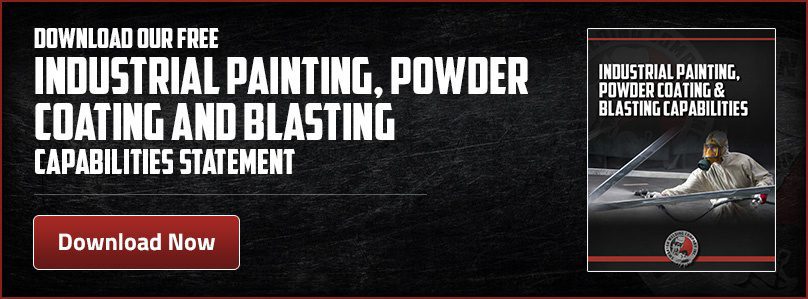The Various Types of Finishing Options for Your Fabrication Project
 Finishing is a most important step in fabrication. Finishing is the final step in preparing metal products for use. Finishing makes products more resistant to corrosion, adds an extra layer of durability and makes surfaces look their best. Finishing provides higher electrical, chemical or tarnish resistance. A product’s finish is determined by its use. Here are some factors considered when choosing a finishing method.
Finishing is a most important step in fabrication. Finishing is the final step in preparing metal products for use. Finishing makes products more resistant to corrosion, adds an extra layer of durability and makes surfaces look their best. Finishing provides higher electrical, chemical or tarnish resistance. A product’s finish is determined by its use. Here are some factors considered when choosing a finishing method.
Types of Metal Finishing
Metal Plating – Metal workers use machines to apply a thin layer of materials like copper, nickel, chromium or aluminum. Sometimes metal plating involves gold, platinum and silver for decorative uses. Metal plating improves corrosion resistance, surface friction and external appearance
Brushed Metal – Metal plating doesn’t smooth out surface defects, so in some cases brushed metal is a better choice. An abrasive belt or wire brush creates a grain that hides surface imperfections.
Powder Coating – Powder coating is decorative, and more durable than paint. Dry plastic powder can be melted and applied to surfaces in a variety of colors and textures.
Hot Blackening – Machines spread black oxide on the outside of a product to coat it in a uniform matte black. Automotive parts, tools and firearms are often finished using hot blackening.
Metal Grinding – Grinding machines wear away edges and smooth out surfaces.
Metal Vibratory Finishing –Operators use vibratory tumblers with abrasive pellets for small pieces that need to be cleaned. Vibratory finishing removes sharp edges and smoothes imperfections.
Two-Part Epoxy – Two-component resins provide a smooth surface for fiberglass, steel, wood and aluminum. They add a moisture barrier and a reflective high-gloss finish that supplies long-term UV protection.
Tar – Finishing tar contains natural resins that waterproof surfaces and inhibit mold and fungi. Use tar in boats, outdoor stairways and other areas that need to be both waterproof and resistant to organic materials.
Anodizing – Operators apply aluminum oxide to aluminum surfaces. The aluminum oxide layer resists corrosion and abrasion. It is available at a lower cost than similar finishes and requires little maintenance. UV rays don’t damage it, it won’t chip or peel, and it does not show fingerprints. It is available in different colors and finishes.
Galvanizing – Galvanized material is coated with a protective layer of zinc. The most common process is to dip products in a molten zinc bath to coat them. Galvanizing costs less than many other finishing methods and has a long life expectancy. One benefit of galvanization is that if it becomes damaged, the rest of the area remains protected, so small damages don’t need touch-ups.
Sand Blasting – Operators use sand or other abrasives at high speed to produce a smooth texture. There are different types of sand blasting based on the degree of cleanliness the project requires.
SP-6 sand blasting meets minimum requirements for commercial blast cleaning. It removes streaks, discolorations and shadows caused by mill scale oxides. SP-10 is a higher standard that for jobs that require a higher level clean than SP-6. Ninety-five percent of surface area must be free of visible residue to meet the standards for SP-10.
How to Choose a Finish
Consider the following factors when choosing a finish:
- Which process best suits how the product will be used?
- Does the technique provide the production speed you need?
- Is the finishing method cost-effective?
- Is the finishing technique suitable for the project’s materials?
Swanton Welding Company, Inc. provides custom welding and fabrication services that include the most important finishing stage. We produce high-quality custom metal fabrication with on-time delivery that meets all our customers’ needs. Contact us today to find out more.

